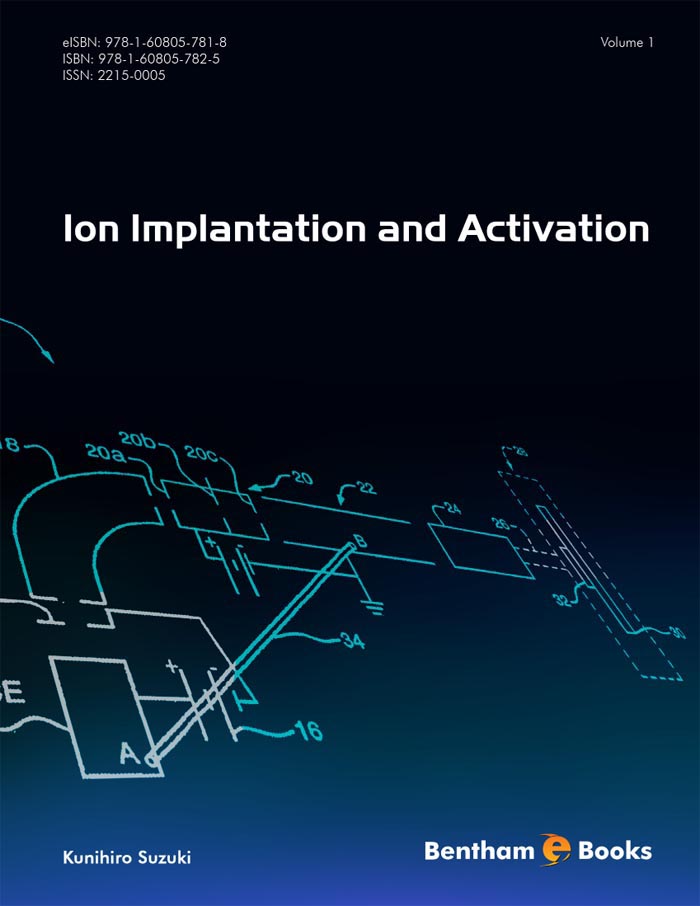Ion implantation is a standard technology, by which impurities are doped into Si substrates in very large scale integration (VLSI) processes in modern times. Defects are unintentionally generated in the substrate by the ion implantation simultaneously since impurities are introduced physically to the lattice, i.e., in non-thermal equilibrium. Hence, a subsequent thermal process is indispensable to recover the damage and activate the introduced impurities. Intensive studies on predicting the ion implantation profiles and activation processes have been done, and they are still under investigations.
Many books on fundamental ion implantation technology and detailed physics related to the ion implantation have been published. Furthermore, database for practical ion implantation profiles is also established and it is valid even for modern technologists and students. However, theoretical models and systematic fundamental experimental data are not closely related to each other, and how accurately the models reproduce the experimental data is not clear.
We have been collecting systematic experimental data to evaluate and develop the models for a long time. We also try to compare the data with related models in this eBook.
Details about the derivation process of fundamental and advanced models are desribed step by step, and their related assumptions and approximations are clarified. If some mathematical and physical background is necessary, related appendixes will be added to make this eBook self-contained. Models that are not established well and under investigations are discussed. Although it is not ensured to be accurate, knowing the detail of models under investigations is interesting for furthering the models.
The author aims at the readers who are experts and non-experts in various fields associated with the ion implantation, hoping that various members can cover some knowledge to collaborate with one another. It is not easy for non-expert members to understand this eBook, but it is believed that they can do it with time and efforts.
This eBook consists of three volumes, and this volume treats the following.
Various ions are implanted into various regions of devices. How the impurities are selected is briefly reviewed.
The interaction between incident ion and substrate atoms is classical physical subjects, where the target energy range is more than MeV. Ion implantation gradually becomes a standard technology to dope Si substrates, and the technology-oriented studies have been intensively investigated, where the energy range is less than MeV. We can use the established interaction between ion and substrate electron cloud, and nuclei with fundamental atomic properties, such as atomic number and mass. The detail derivation process of nuclei and electron stopping power models is also shown.
The physics can be directly implemented into Monte Carlo (MC) simulation. The accuracy of MC is verified by comparing systematic experimental data with wide ion implantation conditions via tuning electron stopping power. Channeling and damage accumulation related to ion implantation are analyzed, but their impact on ion implantation profiles is not treated.
It is indispensable to predict ion implantation profiles in crystal substrates since the substrates are used in practical VLSI processes. Systematic experimental data have been accumulated to construct related database. However, the database does not play a role for predicting ion implanted profiles for any ion implantation condition as it is. Analytical models used to describe the profiles are invoked to predict the profiles to do that. The ion implantation database is a table of parameter values of these functions, and an ion implantation profile for any ion implantation condition can be generated by interpolating or extrapolating the parameter values. The analytical models, such as Gaussian, joined half-Gauss, Pearson IV, dual Pearson IV and tail function, have also been developed. Details about these functions will be described. Furthermore, details realted to Pearson function family, where Pearson IV is one of them, and also Edgeworth polynomial, will also be presented.
How parameters are extracted from experimental and MC data for the analytical functions is also an important subject. The uniqueness of extracting parameters values is an essential subject, which is also studied.
Lateral straggling is very important to predict two-dimensional profiles. However, the lateral resolution of experimental data is poor to obtain accurate lateral straggling. We show how they can be extracted by combining with a theory and experimental data.
This eBook also treats Lindhart, Scharf, and Schiott (LSS) theory based on the same physics as MC. LSS theory cannot predict the profile itself but its moments. Therefore, we can generate profiles by using analytical functions which are related to the moments. Probability functions related to various ranges are introduced instead of tracing the trajectories of the ions in the LSS theory, and we can obtain the results instantaneously. The LSS theory needs some approximations to solve the related differential equations. The approximations influence accuracy of the LSS theory. Performing perturbation approximation, we improve the accuracy step by step and obtain the results which are similar to those of MC. Simplification of the LSS theory is done to obtaining thumb of a rule for ion implantation profiles.
Moreover, this eBook treats the profiles in crystal substrates theoretically by dealing with channeling phenomenon empirically in the LSS theory. It is not complete enough but gives rough shape of the profiles. This model is applied to profiles in substrates, where is a component ratio of Ge in the substrate.
Conflict of Interest
The author(s) confirm that this chapter content has no conflict of interest.
Kunihiro Suzuki
Fujitsu limited
Minatoku kaigan 1-11-1 Tokyo
Japan
E-mail:kunihiro830532@ybb.ne.jp




